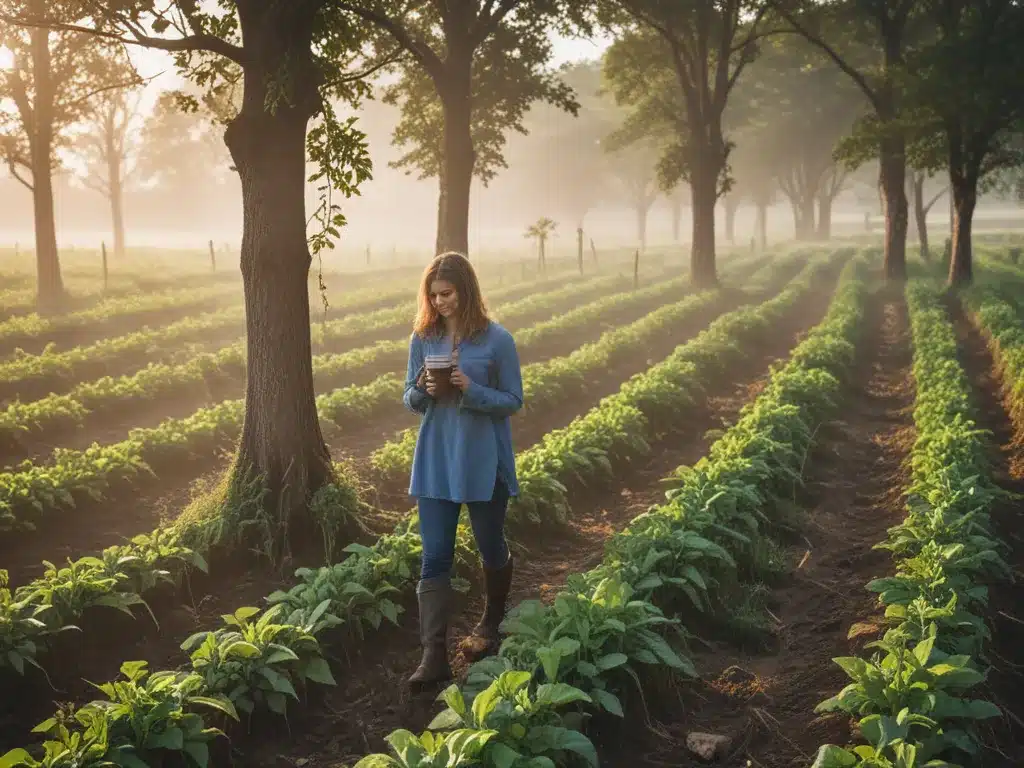 Regenerative Agriculture: What it Means for Your Morning Cup” />
Regenerative Agriculture: What it Means for Your Morning Cup” />
How regenerative agricultural practices impact the farmers who grow our coffee beans
When I wake each morning, one of the rituals that helps me start my day is preparing a cup of coffee. As the rich aroma fills my kitchen, I don’t often think about the journey my coffee beans took to reach my mug. The farmers who grow coffee play a crucial role in this process, and the way they cultivate their crops can have wide-reaching environmental and social impacts. An emerging method called regenerative agriculture aims to support both farmers and the land.
Regenerative agriculture encourages practices that enhance soil health, protect water sources, sequester carbon, and preserve biodiversity. Rather than relying on synthetic fertilizers and pesticides, it utilizes natural techniques such as cover crops, composting, rotational grazing, and reforestation. These soil management strategies can replenish nutrients in the ground while fostering ecosystem services like nutrient cycling, water filtration, and habitat provision. When coffee farmers employ regenerative methods, they establish resilient farm systems that preserve landscapes for generations to come.
| Farming Practice | Benefits for Farmers | Benefits for Environment |
|-|-|-|
| Cover cropping | Retains soil moisture, adds organic matter, reduces erosion | Improves soil health, supports pollinator populations, filters water, sequesters carbon |
| Composting | Creates nutrient-rich organic fertilizer, reduces input costs | Enhances soil structure, retains water, builds soil carbon |
| Agroforestry | Provides windbreaks, livestock fodder, fuel/building materials | Conserves biodiversity, regulates hydrology, fixes nitrogen |
Regenerative farms are not only better for the planet, but they can also enhance livelihoods. When soil fertility improves through techniques like cover cropping and composting, harvests become more abundant and profits increase. Farmers spend less on purchased chemical inputs and become more economically resilient. Their labor needs may also decrease as biodiverse landscapes require fewer hours of maintenance. Overall, regenerative agriculture empowers coffee growers worldwide to earn fair livings while safeguarding the future of their land.
How consumers can support regenerative coffee farming
While sipping my morning cup of joe, I often wonder how I as a consumer can help advance these sustainable farming practices. One key way is to seek out coffee certified under standards that incorporate regenerative criteria. Organizations like Commonland address environmental and social issues through their verification processes. Consumers can also contact roasters directly to learn about their sourcing policies and farmer support programs. Buying coffee bearing the stamp of certifications like Fair Trade and Rainforest Alliance demonstrates market demand for sustainably-grown beans.
Words of encouragement left on a company’s social media can motivate continued adoption of regenerative methods on origin farms. Financial contributions to organizations funding on-the-ground projects also help farmers transition acreage over to practices like agroforestry and resource conservation. While change begins in the fields, conscious consumerism shows producers that stewardship of the land leads to healthy communities and resilient livelihoods now and for future generations. Every small act, like selecting a specific bag at the grocery store, collectively makes an impact that ripples outward.
How a shift to regenerative agriculture could affect coffee prices
As more farmers start to transition portions of their landscapes to regenerative systems, this widespread transition could potentially impact worldwide coffee prices over time. In the short-term, costs associated with establishing techniques like hedgerows, cover crops and composting infrastructures may cause price fluctuations. However, as regenerative farms become more established and their yields increase through enriched soils, production costs are expected to decrease substantially. Likewise, expenditures on purchased inputs could shrink dramatically for operations utilizing natural farming methods.
Rather than artificially propping up prices, long-term market stability relies on communities of smallholder producers earning living incomes from their crops. Regenerative agriculture aims to restore this balance by fostering soil health, biodiversity and ecosystem services on coffee farms. As a result, future projections estimate a potential for stable, premium prices paid directly to farmers that employ these sustainable growing systems. Though upfront transitions require adjustments, a diversified, biodiverse agricultural model roots stability where it belongs – in the grounded work of feeding communities while restoring the land they steward.
In conclusion, while my morning coffee routine remains largely the same, thinking about regenerative agriculture offers valuable insight into the journey behind each cup. The farmers growing my beans face both challenges and opportunities for positive change. As a conscientious consumer, small actions like conscious purchases contribute to better futures for all involved in cultivating this crop – from farms and farming families, all the way to my kitchen each morning. When access and demand align around practices honoring people and planet, the rewards ripple out across landscapes and communities for years to come.



















